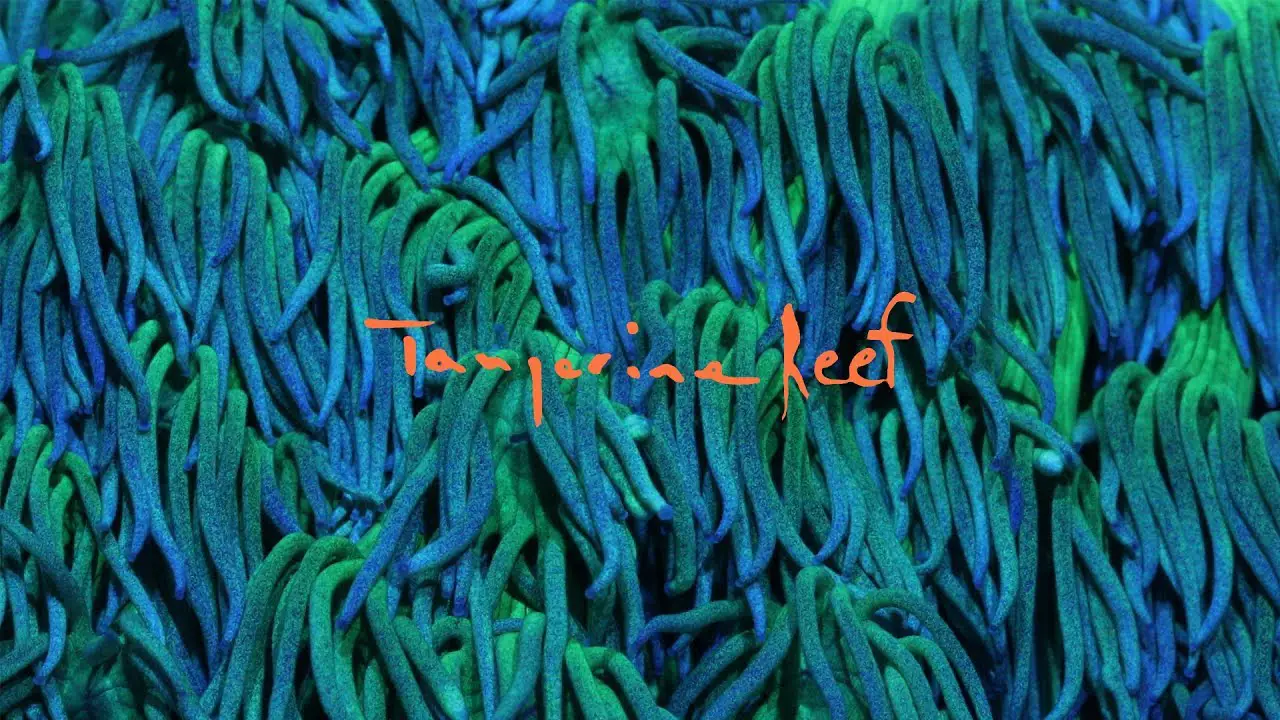On Aug. 17, Animal Collective released their second audiovisual album, “Tangerine Reef,” in collaboration with the Miami-based duo, Coral Morphologic. The project commemorates 2018’s International Year of the Reef (IYOR2018), an initiative that aims to strengthen global awareness about the values of, and threats to, coral reefs and associated ecosystems.
The album consists of 13 songs, that, when played one after the other (and in order), creates a 52-minute mix. All the songs in “Tangerine Reef” can be found on Spotify, just without the visuals. This should be done with caution because the visuals alongside the continuous soundtrack is what makes this project worth checking out.
For those unfamiliar, Coral Morphologic describe themselves as art-science pioneers of avant-garde coral macro-videography. Their current audiovisual album features 20-plus different species of aquatic life that are common to coral reefs. The majority of the organisms pictured are either hard or soft coral, but sea urchins, anemone, mats and cucumbers are also shown.
Animal Collective utilized studio effects, such as panning and reverb, to emulate organic sounds, like being underwater. The instrumental music fits transcendently with the marine life pictured in the video.
Sometimes it’s hard to believe that some of the video shots shown are even real. Amazingly, Coral Morphologic did not use any CGI or visual effects.
Audibly, the experimental pop-rock band has never sounded more psychedelic, producing alien-like sounds to complement the foreign-looking art. The group also implements vocals, which are not always easily interpreted, and possibly for good reason, because vocals sometimes make little sense alongside visuals when it comes to making a visual album.
I think this is a beautiful collaboration of art that probably required a lot of heartfelt work; however, I also think that the concept may have been a bit better than the execution. The purpose of the album was to give depleting coral reefs a voice. Instead, the vocals come off as either having nothing to do with coral or are very metaphoric.

I don’t think the lyrics are the most important aspect of this project, but Animal Collective’s ode to the dwindling organism is definitely hindered by the words they sing, in my opinion.
The vocals fit the video sonically, but the meaning is questionable and requires more transcribing. In the first song of the album, “Hair Cutter,” the line by line lyrics don’t seem relevant to the video of coral or to the concept of the project. “Like a little/Why does she need it?/As strong as something/For a happy customer/Help her sometimes/Better help her often/She kept on working/And sitting by a hair cutter.”
If the lyrics truly have nothing to do with coral (seemingly so) it is a disappointment because, at least to me, this type of deep project needs to be thought-out and cohesive on every level. Almost all of the songs in the album have lyrics. Some are better than others, but most are very misleading.
In the end, the project is still beautiful regardless of the vocals. The videography gets better and better song after song. Some of the synths used sound similar to the likes of Flume, who is notorious for organic-sounding synths.
So, overall, Animal Collective did relatively well in their collaboration with Coral Morphologic.
Again, the main purpose of the album is to highlight IYOR2018. If you don’t know, corals are, in fact, animals and are classified as anthozoan cnidarians, a taxonomical grouping that includes many marine invertebrates. They can exist as individual polyps or as colonies with hundreds to hundreds of thousand polyps.
When many coral colonies grow together, the result is a reef: a living, growing structure that provides nooks and crannies as protection for many kinds of oceanic wildlife. Over time, large coral reefs provide diverse ecosystems that allow habitation for thousands of marine species.
The current state of coral reef is depressing. Coral bleaching is happening faster and more often than ever before. Marine biologists around the world agree that the cause is due to the rise in temperature in the ocean. The slight rise in the ocean’s temperature decreases the amount of energy coral can make from available resources. The result is bleaching followed by eventual mortality.
Bleaching can be reverted; however, it will take a major effort to either find a way to lower oceanic temperatures or enable coral to resist the temperature changes. Research is in the works, but help of all kinds is still needed to restore the once stunning coral reefs back to their optimal health.
Kudos to Animal Collective and Coral Morphologic for contributing to this effort. Hopefully they will inspire more artists and scientists to continue to work on this movement.

















